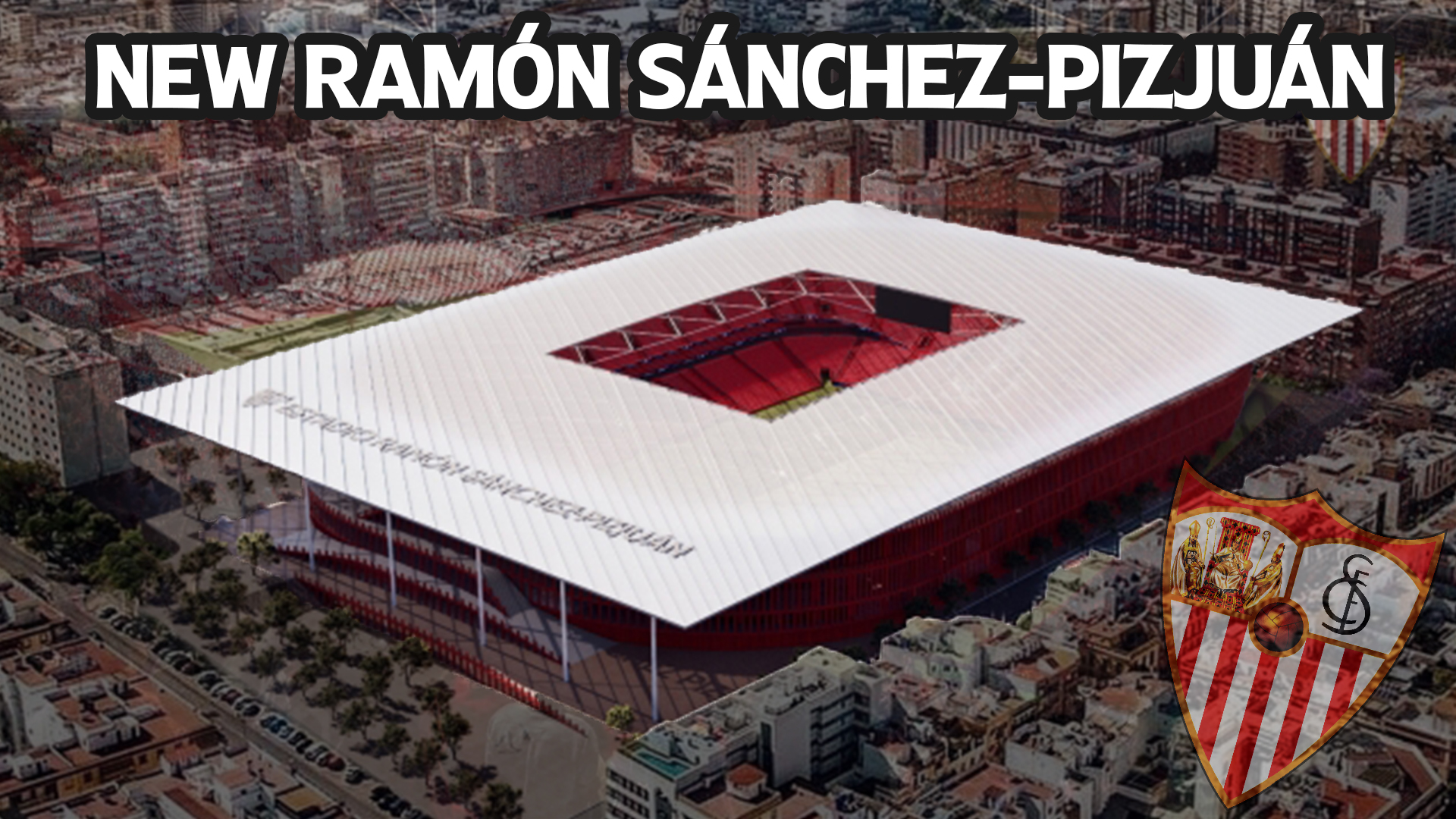In a momentous announcement in early December, Sevilla FC revealed plans for a transformative project – the construction of a New Ramón Sánchez-Pizjuán Stadium.
This ambitious endeavor aims to not only meet the demands of the club’s passionate fanbase but also to modernize its facilities, creating a venue fit for 21st-century football. The project holds the obligation to honor the history of the current stadium, which is nestled in the Nervión neighborhood of the city, while embracing modernity, sustainability, and technological advancements.

History
Sevilla FC has proudly called the Ramón Sánchez-Pizjuán its home since 1958. The stadium was officially inaugurated on 7th September 1958 and since then, has undergone several renovations and expansions over the years to enhance its capacity and facilities – with the current capacity sitting at around 42500 spectators.
Before the Estadio Ramón Sánchez Pizjuán, Sevilla used to play at the Estadio de Nervión. However, the stadium began to be too small for the growing club and it was decided to move to a new ground. The stadium is named after Ramón Sánchez-Pizjuán, a former president of Sevilla FC. He played a pivotal role in the club’s history and served as its president during two significant periods, from 1932 to 1941 and then again from 1948 to 1956. It has a distinctive architectural style with a blend of traditional and modern elements. Its exterior features the iconic mosaic wall, a recognizable symbol for both Sevilla FC and the city.

The stadium has witnessed numerous historic moments in Spanish football and it holds a special place in the hearts of Sevilla FC fans, as it was under Ramón Sánchez-Pizjuán’s presidency that the club secured their only La Liga title.
Thankfully for fans of the club, there are no plans to leave the iconic stadium, but instead, the club will make substantial renovations to the structure of the stadium, akin to building a brand new structure entirely on the site of their current home. In fact, the changes will be so vast that only the outer shell and iconic mosaic wall of the current ground will be retained on the outside. Inside, the ground will be demolished and reconstructed.
Architectural Inspiration and Cultural Integration
The project to renovate the stadium has been developed in collaboration with IDOM architects and draws inspiration from key elements of Sevilla’s rich history and cultural heritage.
Influences from iconic landmarks such as the Real Alcázar, the Archivo de Indias, and the Cathedral of Sevilla are incorporated into the design, that will create a stadium that not only stands as a sports venue but also as a city landmark. This endeavor seeks to link the New Ramón Sánchez-Pizjuán to Sevilla’s urban history, culture, and heritage, ensuring it becomes an integral part of the city’s identity.

The proposed design places emphasis on several key aspects:
- Renewing the Tradition of THE NERVIÓN BOMBONERA: The aim is to enhance the incredible football atmosphere, creating a memorable experience for spectators.
- State-of-the-Art Infrastructure: Implementing the most advanced technologies for security, television broadcasting, fan experience, and sustainability to elevate the stadium to the highest standards in football.
- Urban Integration: Establishing a careful relationship between the new stadium and its urban context, respecting the Nervión neighborhood’s scale while generating public spaces for year-round use.
- Architectural Proposal: The New Ramón Sánchez-Pizjuán is envisioned as a contemporary, identifiable, and ambitious architectural landmark, contributing to the city’s metropolitan landscape.
The proposed changes to the stadium include plans to increase the seating capacity to accommodate 55,000 spectators, with stands reminiscent of the current stadium but with increased comfort and additional hospitality offerings
This will include an Innovative Single-Tier Stand. The current Gol Norte Stand will transform into a vast single-tier stand with 15,000 seats, a unique feature not seen before in Spanish football, and one that will be reminiscent of that seen in Borussia Dortmund and Tottenham s stadiums.
The new stand will also include a new roof that will cover all stands, enhancing the overall fan experience and creating an even more vibrant footballing atmosphere. A south façade overlooking a plaza will create a versatile, shaded, and ventilated space, activating the urban environment and transforming it into the new Plaza de Nervión.
The construction of the New Ramón Sánchez-Pizjuán is set to begin on June 1, 2026, with completion targeted for 2028.
Cost
Estimating the cost at €300-350 million, the redevelopment aligns with a broader strategic plan to generate year-round revenue independent of the club’s on-field performance. Funding, in part, will come from the CVC deal, with projections indicating a substantial increase in the club’s revenue.
While excitement surrounds the project, logistical challenges may arise during the construction period, possibly requiring shared usage of La Cartuja with Real Betis, whose Benito Villamarín stadium is also undergoing renovations.
Sevilla FC’s vision for the New Ramón Sánchez-Pizjuán transcends the realm of football stadiums, aiming to create a dynamic, modern, and culturally integrated space that serves the club, its fans, and the city of Sevilla for generations to come.




